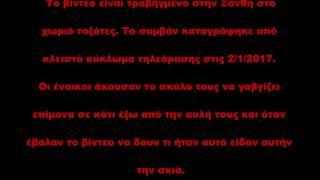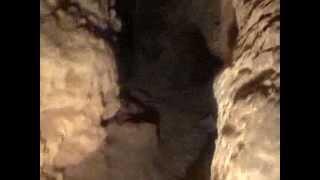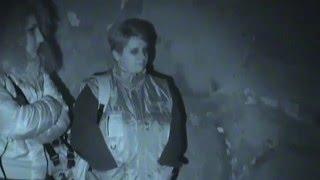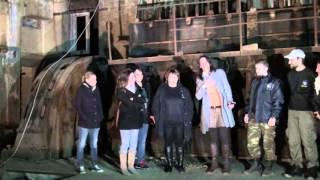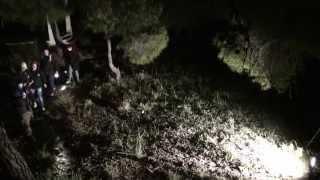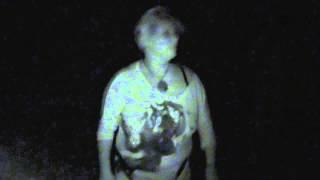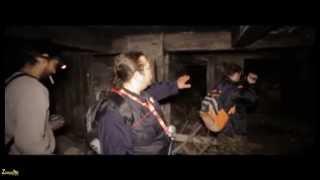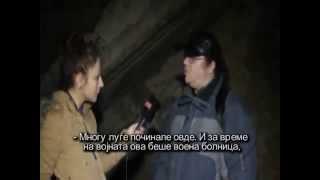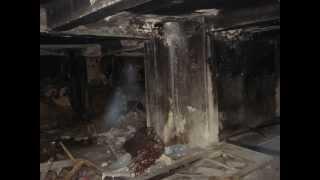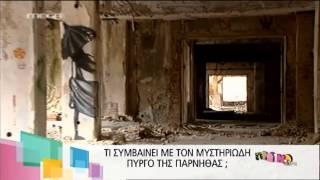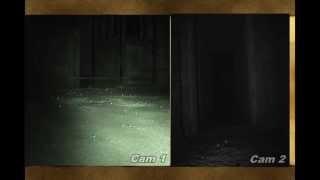This is Segment 1 of 2. Segment 1 is being provided as a courtesy of Veritas Radio. To watch/listen to Segment 2 of this exclusive interview, subscribe at http://www.veritasradio.com to watch the rest.
Veritas is censorship- and commercial-free and survives on your voluntary subscriptions. Thank you for supporting our work. ~Mel Fabregas
S y n o p s i s
History's Mysteries is an investigation into 35 archaeological mysteries from across the globe, organized by geographical region. As with Brian Haughton's previous book Hidden History, this work separates its collection of enthralling ancient riddles into three sections: Mysterious Places, Unexplained Artifacts, and Enigmatic People. The choice of subjects was made to include a wide range of cultures and a mixture of both the well known and the relatively obscure. Consequently you will read about India's celebrated Taj Mahal and the biblical Temple of Solomon, as well as the little known Royston Cave, in the UK, the infamous Rennes-le-Château, in France, and the forgotten site of Great Zimbabwe, in South Africa. But what constitutes an ancient mystery? The ancient world will more often than not be mysterious by its very nature.
We can excavate buildings, artifacts, even sometimes texts, but we cannot know how the people of these ancient societies felt, what they believed or what motivated them to behave in the way they did. Nevertheless, modern science is allowing us the kind of access to secrets of the past which was only dreamt of a few decades ago. DNA studies, for example, of modern inhabitants of parts of Syria, Palestine, Tunisia, Morocco, Cyprus, and Malta have shown extraordinary connections with the ancient Phoenicians who once had colonies in those areas. Ongoing study, conservation, and sampling of The Uluburun Shipwreck, the remains of a 3,300 year old ship and its extraordinary cargo from the coast of southern Turkey, is discovering fascinating connections between ancient Canaan, Egypt, Mycenaean Greece, Italy and even the Baltic Sea area of Northern Europe.
Science alone, however, will not give us a complete picture of the ancient world. But when combined with the study of mythology, folklore and sometimes simply a sharp change of viewpoint when looking back at the ancient world, science can be extremely enlightening. Indeed, it is surprising what can be accomplished by turning oneself off from a technology‐obsessed 21st century mindset, for example in terms of understanding what the priorities may have been for the inhabitants of Nabta Play in the Egyptian desert 11,000 years ago, or the builders of Tenochtitlan in Mexico, around 700 years ago. Nevertheless, even if we could somehow project ourselves back into antiquity, one suspects that the magic and mystery which was undoubtedly a part of the everyday lives of many of these ancient civilizations would remain elusive.
It is often said by 'alternative' historians that bringing a particularly controversial ancient site or artifact to the attention of the world will 'turn conventional wisdom on its head'. 'Conventional' archaeologists ('conventional' presumably meaning those who have studied and qualified as archaeologists) are criticized for not being open‐minded enough to accept new theories and ideas. But, generally this is not the case, witness the (often heated) discussions surrounding genuinely challenging archaeological puzzles such as the extraordinary Turkish site of Göbekli Tepe, the enigmatic 'Venus' figurines of the last Ice Age, the abandonment of Mesa Verde, or the volcanic eruption which destroyed the Mediterranean island of Thera. Spurious 'ancient' artifacts or sites (such as the Oak Island Treasure or The Dendera Lamps) are anything but a challenge to 'conventional' archaeology.
The furor surrounding these subjects on the web and in various print publications is the result of speculation based on the preconceived agenda of the writer, and as such has no place in history or archaeology. It is this distinction between genuine and bogus ancient mysteries that History's Mysteries attempts to clarify. Sometimes a few hours research and a generous helping of critical thinking can dispense with anything in the second category. In writing History's Mysteries Haughton has not attempted to justify personal prejudices regarding the enigmas of the ancient world. Rather he has been guided by the facts, even if, in the end, they can sometimes be unsatisfactory.
This has to be the case, especially when we are dealing with prehistoric cultures that left no writing. We do not know, perhaps will never know all the answers. In History's Mysteries Haughton has tried to present a summary of the current level of knowledge relating to a small selection of archaeological mysteries. He leaves it up to his readers to pursue in more detail these riddles left to us by our ancient ancestors.
Veritas is censorship- and commercial-free and survives on your voluntary subscriptions. Thank you for supporting our work. ~Mel Fabregas
S y n o p s i s
History's Mysteries is an investigation into 35 archaeological mysteries from across the globe, organized by geographical region. As with Brian Haughton's previous book Hidden History, this work separates its collection of enthralling ancient riddles into three sections: Mysterious Places, Unexplained Artifacts, and Enigmatic People. The choice of subjects was made to include a wide range of cultures and a mixture of both the well known and the relatively obscure. Consequently you will read about India's celebrated Taj Mahal and the biblical Temple of Solomon, as well as the little known Royston Cave, in the UK, the infamous Rennes-le-Château, in France, and the forgotten site of Great Zimbabwe, in South Africa. But what constitutes an ancient mystery? The ancient world will more often than not be mysterious by its very nature.
We can excavate buildings, artifacts, even sometimes texts, but we cannot know how the people of these ancient societies felt, what they believed or what motivated them to behave in the way they did. Nevertheless, modern science is allowing us the kind of access to secrets of the past which was only dreamt of a few decades ago. DNA studies, for example, of modern inhabitants of parts of Syria, Palestine, Tunisia, Morocco, Cyprus, and Malta have shown extraordinary connections with the ancient Phoenicians who once had colonies in those areas. Ongoing study, conservation, and sampling of The Uluburun Shipwreck, the remains of a 3,300 year old ship and its extraordinary cargo from the coast of southern Turkey, is discovering fascinating connections between ancient Canaan, Egypt, Mycenaean Greece, Italy and even the Baltic Sea area of Northern Europe.
Science alone, however, will not give us a complete picture of the ancient world. But when combined with the study of mythology, folklore and sometimes simply a sharp change of viewpoint when looking back at the ancient world, science can be extremely enlightening. Indeed, it is surprising what can be accomplished by turning oneself off from a technology‐obsessed 21st century mindset, for example in terms of understanding what the priorities may have been for the inhabitants of Nabta Play in the Egyptian desert 11,000 years ago, or the builders of Tenochtitlan in Mexico, around 700 years ago. Nevertheless, even if we could somehow project ourselves back into antiquity, one suspects that the magic and mystery which was undoubtedly a part of the everyday lives of many of these ancient civilizations would remain elusive.
It is often said by 'alternative' historians that bringing a particularly controversial ancient site or artifact to the attention of the world will 'turn conventional wisdom on its head'. 'Conventional' archaeologists ('conventional' presumably meaning those who have studied and qualified as archaeologists) are criticized for not being open‐minded enough to accept new theories and ideas. But, generally this is not the case, witness the (often heated) discussions surrounding genuinely challenging archaeological puzzles such as the extraordinary Turkish site of Göbekli Tepe, the enigmatic 'Venus' figurines of the last Ice Age, the abandonment of Mesa Verde, or the volcanic eruption which destroyed the Mediterranean island of Thera. Spurious 'ancient' artifacts or sites (such as the Oak Island Treasure or The Dendera Lamps) are anything but a challenge to 'conventional' archaeology.
The furor surrounding these subjects on the web and in various print publications is the result of speculation based on the preconceived agenda of the writer, and as such has no place in history or archaeology. It is this distinction between genuine and bogus ancient mysteries that History's Mysteries attempts to clarify. Sometimes a few hours research and a generous helping of critical thinking can dispense with anything in the second category. In writing History's Mysteries Haughton has not attempted to justify personal prejudices regarding the enigmas of the ancient world. Rather he has been guided by the facts, even if, in the end, they can sometimes be unsatisfactory.
This has to be the case, especially when we are dealing with prehistoric cultures that left no writing. We do not know, perhaps will never know all the answers. In History's Mysteries Haughton has tried to present a summary of the current level of knowledge relating to a small selection of archaeological mysteries. He leaves it up to his readers to pursue in more detail these riddles left to us by our ancient ancestors.
Sign in or sign up to post comments.
Be the first to comment



